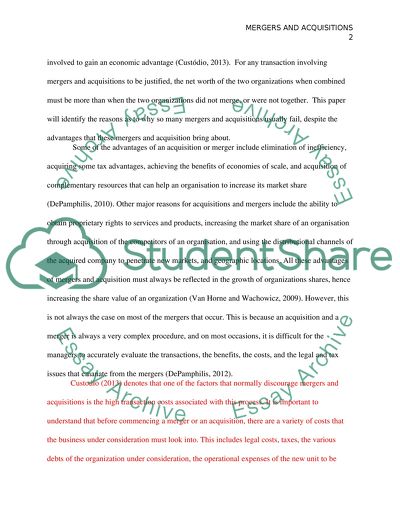Cite this document
(“If managers are rational, mergers should always lead to an increase in Essay”, n.d.)
If managers are rational, mergers should always lead to an increase in Essay. Retrieved from https://studentshare.org/macro-microeconomics/1634840-if-managers-are-rational-mergers-should-always-lead-to-an-increase-in-shareholder-value-discuss-this-statement-in-view-of-the-relevant-analysis-of-mergers-and-acquisitions
If managers are rational, mergers should always lead to an increase in Essay. Retrieved from https://studentshare.org/macro-microeconomics/1634840-if-managers-are-rational-mergers-should-always-lead-to-an-increase-in-shareholder-value-discuss-this-statement-in-view-of-the-relevant-analysis-of-mergers-and-acquisitions
(If Managers Are Rational, Mergers Should Always Lead to an Increase in Essay)
If Managers Are Rational, Mergers Should Always Lead to an Increase in Essay. https://studentshare.org/macro-microeconomics/1634840-if-managers-are-rational-mergers-should-always-lead-to-an-increase-in-shareholder-value-discuss-this-statement-in-view-of-the-relevant-analysis-of-mergers-and-acquisitions.
If Managers Are Rational, Mergers Should Always Lead to an Increase in Essay. https://studentshare.org/macro-microeconomics/1634840-if-managers-are-rational-mergers-should-always-lead-to-an-increase-in-shareholder-value-discuss-this-statement-in-view-of-the-relevant-analysis-of-mergers-and-acquisitions.
“If Managers Are Rational, Mergers Should Always Lead to an Increase in Essay”, n.d. https://studentshare.org/macro-microeconomics/1634840-if-managers-are-rational-mergers-should-always-lead-to-an-increase-in-shareholder-value-discuss-this-statement-in-view-of-the-relevant-analysis-of-mergers-and-acquisitions.


